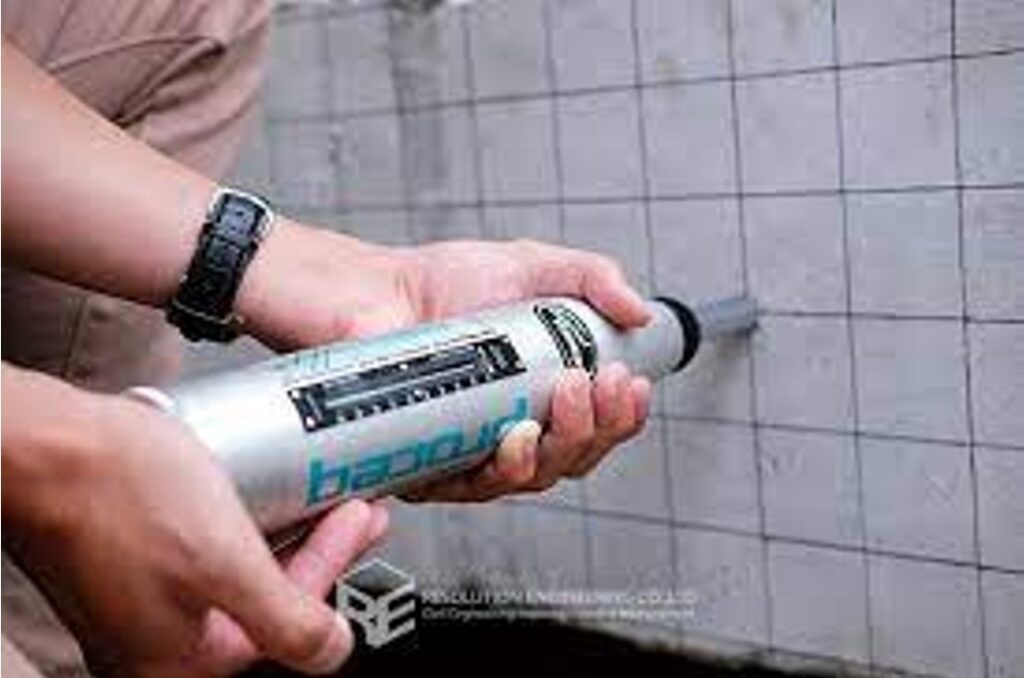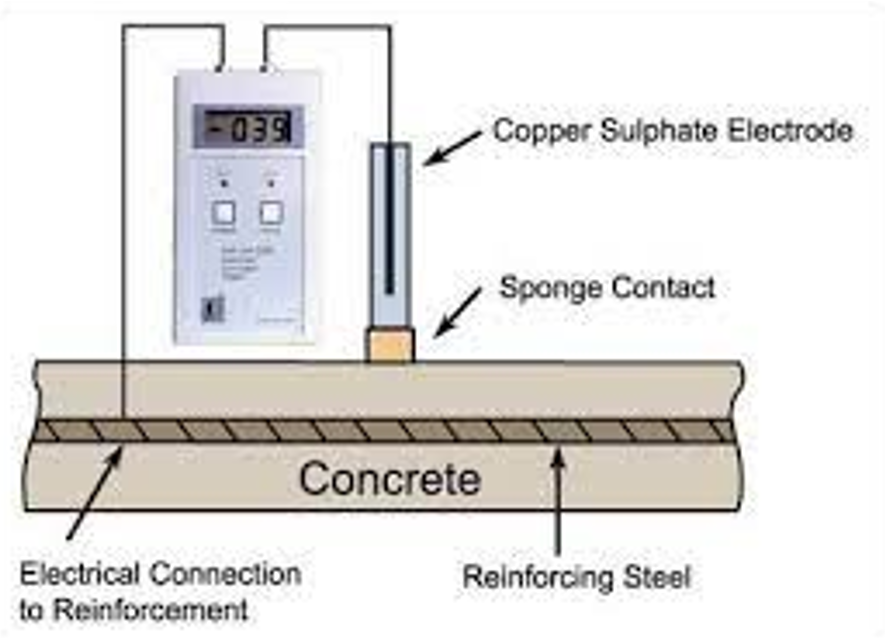Non-destructive testing (NDT) methods are used to inspect hardened concrete and to evaluate the condition of concrete in deep foundations, bridges, buildings, pavements, dams, and other concrete construction. NDT methods are applied to concrete construction to control quality of new construction, troubleshoot problems with new construction, evaluate condition of older concrete for rehabilitation purposes, Seismic retrofitting, and for quality assurance of concrete repairs.

Rebound hammer test
This is one of the oldest non-destructive tests and it is still widely used. It was devised in 1948 by Ernst Schmidt, and is therefore known also as the Schmidt hammer, or sclerometer, test.
The rebound hammer test is based on the principle that the rebound of an elastic mass depends on the hardness of the surface against which the mass impinges. However, despite its apparent simplicity, the rebound hammer test involves complex problems of impact and the associated stress-wave propagation. In the rebound hammer test a spring-loaded mass has a fixed amount of energy imparted to it by extending the spring to a fixed position; this is achieved by pressing the plunger against the surface of the concrete under test. Upon release, the mass rebounds from the plunger, still in contact with the concrete surface, and the distance travelled by the mass, expressed as a percentage of the initial extension of the spring, is called the rebound number. This number is indicated by a rider moving along a graduated scale. Some hammer models produce a print-out of test results. The rebound number is an arbitrary measure because it depends on the energy stored in the given spring and on the size of the mass. The hammer has to be used against a smooth surface, preferably a formed one. Open-textured concrete cannot, therefore, be tested. Trowelled surfaces should be rubbed smooth using a carborundum stone.

Ground Penetration Radar
Ground Penetrating Radar (GPR) provides a cost-effective, nondestructive and reliable tool for scanning and imaging of sub-surface defects, voids, and objects. GPR was primarily developed and used in geophysics and geology for subsurface scanning and imaging. Since then, the method has been successfully adapted in many other disciplines including civil engineering. The multipurpose nature of ground penetrating radar and its broad range of applications, make it distinct from existing NDT methods. GPR can detect subsurface events and objects using the electromagnetic radar impulse, ranging from 10 MHz to 3,000 MHz.

Pundit (Ultrasonic Test)
Ultrasonic Pulse Velocity (UPV) is an effective non-destructive testing (NDT) method for quality control of concrete materials, and detecting damages in structural components. The UPV methods have traditionally been used for the quality control of materials, mostly homogeneous materials such as metals and welded connections. With the recent advancement in transducer technology, the test has been widely accepted in testing concrete materials. Ultrasonic testing of concrete is an effective way for quality assessment and uniformity, and crack depth estimation. It can also be used to detect and localize voids, honeycombs, delamination, pipes, and defects.

Half-cell potential test
The half-cell potential test is the only corrosion monitoring technique for Corrosion Potentials of Uncoated Reinforcing Steel in Concrete. It is used to determine the probability of corrosion within the rebar in reinforced concrete structures. Half Cell corrosion mapping is an effective method for assessing the severity of corrosion activity in concrete structures. It is the most well-known procedure to identify the likelihood of active corrosion; however, the test does not provide any information about the kinetics of corrosion activity. The easy and cost-effective procedure of the test makes it popular among engineers and structure inspectors.

Coring
Core test is a well-established method to assess whether the suspect hardened concrete complies with strength- based acceptance criteria or not; and sometimes it becomes the unique tool for safety assessment of existing concrete structures. Laboratory studies of concrete cores or samples removed from the structure often assist in the evaluation of concrete. Core samples can be used for some other tests such as; Tensile strength, Static modulus of elasticity, Petrographic examination, and freezing and thawing. The results from such testing can also be correlated with additional non-destructive testing results to reduce the size and number of samples required.